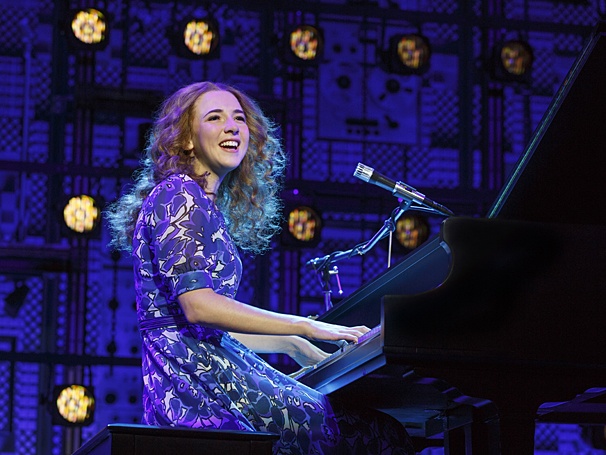Conductor Tito Munoz
Classics 7: All Mozart
Tito Munoz, conductor
Michael Davis, violin
Jon Gustely, horn
Review by Chris Stewart
Entire contents copyright © 2014 by Chris Stewart. All rights reserved.
On March 15, the Louisville Orchestra performed a concert consisting exclusively of the works of Mozart. If each piece were considered individually, none would stand out as a particularly remarkable programming choice. The overture to The Marriage of Figaro is easily one of Mozart’s most ubiquitous works, and his fifth concerto for violin is only slightly less recognizable. The intrigue in the programming choice stems from the fact that every one of Saturday’s pieces would be from the same composer.
As I prepared for the concert on Saturday, the real question on my mind was “why Mozart?” I majored in violin performance, have taken more music history courses and written more papers than I care to contemplate, and must admit that, going into the concert, my natural inclination nudged me much more strongly toward eschewing Mozart’s classical era delicacy for something out of Shostakovich’s portfolio. Like many music school graduates, my classical interests fit much more squarely in the late romantic and early modern periods. As the downbeat neared, however, I forced myself into a mindset of critical objectivity and do not regret the decision.
The LO played host on Saturday to guest conductor Tito Muñoz. Mr. Muñoz has conducted with the Cleveland Orchestra, National Symphony Orchestra, and a laundry list of other professional symphonies and festival orchestras. While Mr. Muñoz’ conducting certainly seemed on point, one wonders why he opted not to interact with the audience. Whether the choice not to engage the hometown crowd was happenstance or by design, Mr. Muñoz should be made aware that Louisville is a friendly city that enjoys reaching out to guests and appreciates it when the guests return the favor.
The overture to The Marriage of Figaro opened the concert. Frenetic yet beautiful, the overture perfectly captures the frenzy, confusion, love, anger, and eventual triumph surrounding preparations for the wedding which is the subject of the opera. Certainly, these sentiments ring as true today as in the eighteenth century when Mozart penned his magnum opus. The orchestra performed the work with the confidence and grace one would expect from seasoned professionals playing a pillar of the repertoire.
Next, the LO featured two of its distinguished musicians, concertmaster Michael Davis and principal horn player Jon Gustely, on two of Mozart’s most famous concertos, the Fifth Concerto for Violin in A Major and the Fourth Concerto for Horn in E Flat Major. Concertmaster Michael Davis excelled in his performance of the violin concerto often referred to as the Turkish Concerto. The first movement begins with a complete performance by the orchestra of the exposition before the soloist begins the main theme. This style of exposition is common to the classical period, but the broad, majestic, and often-grand melodic lines separate this first movement from the typical jaunty allegros common to the period. The violin begins with a triumphant opening arpeggiating the tonic triad of A major up to the highest register of the violin then quickly falling in a barrage of turns and sixteenth notes reminding the listener that Mozart was himself a virtuoso violinist and therefore intimately familiar with the violin’s register and how to maximize its potential.
The first movement continues into a turbulent development featuring Mozart’s trademark resolution of diminished chords into minor keys. Leading the listener on a tonal expedition, Mozart eventually arrives back to the home key and recapitulates the main theme with characteristic brilliance. Finally, the orchestra sounds its cadential 6/4, and Mr. Davis treats the audience to a beautiful cadenza showcasing Mr. Davis’ virtuosity through extended double stop passages and long runs centered around the movement’s main themes.
The concerto earns its nickname “Turkish” from the third movement that features a modulation to A minor that clearly acknowledges the gypsy dances of Eastern Europe. At one point, the lower strings affect a foot-stamping sound reminiscent of gypsy dances by rhythmically slapping their instruments with the backs of their bows. Mr. Davis added the appropriate schmaltz to these sections and finished the concerto to a standing ovation.
Next, Jon Gustely treated the audience to Mozart’s Fourth Concerto for Horn in E Flat Major. At the time Mozart penned the concerto, the horn still functioned as a hunting horn. With that in mind, Mozart never failed to add an appropriate level of playfulness and sportsmanship to his horn concertos. Mr. Gustely clearly understood the levity intended in the music and carried off the demanding technical aspects of the piece with a lighthearted exuberance. Unfortunately, the orchestra seemed to have difficulty matching Mr. Gustely’s enthusiasm and presented a rather dull backdrop. Moreover, the in sections of rhythmic accompaniment, the violins and violas were occasionally out of sync with each other and lagging behind the soloist. All in all, Mr. Gustely painted a beautiful image of an eighteenth century Austrian hunting party on a classic backdrop that was warn an tattered in places.
Finally, the orchestra regained its stride and finished with an outstanding rendition of Mozart’s Symphony No. 35 in D Major (the Haffner). The first movement favored a strictly formulaic structure more commonly associated with Haydn than Mozart, but the Minuet movement returns to Mozart’s characteristic playfulness. The fourth movement, written while Mozart was composing The Marriage of Figaro with whose overture the orchestra opened their concert, possesses a boisterous and energetic character reflective of the initial overture.
Throughout the symphony, the LO offered the refined delicacy called for by the first and second movements and followed up with the passion and exuberance commanded by the third and fourth. The rousing fourth movement had a concertgoer near me literally dancing in her seat. Her reaction to the music inspired me to consider the excitement that must have gripped Vienna music halls when the young master Mozart was set to premier a new program of music. Well-appointed gentlemen and ladies and, frequently, the emperor himself would have thought nothing of a concert consisting entirely of Mozart’s work. Rather, they would have made their way to the concert hall with the anticipation and excitement that now seems reserved for sporting events and pop music.
I extend my gratitude to the stranger so genuinely moved by Mozart that she could hardly reserve her applause until the end of each piece. Her unabashed enthusiasm led me from a position of asking “why Mozart?” to a renewed interest in the master and a better appreciation of the classical period. Of course, none of this could have happened without the professional talent and outstanding direction of the Louisville Orchestra, a true gem of the Louisville arts scene.
Classics 7: All Mozart
March 15, 2014
Louisville Orchestra
At The Brown Theatre
315 West Broadway
Louisville, KY 40202
Louisvilleorchestra.org





